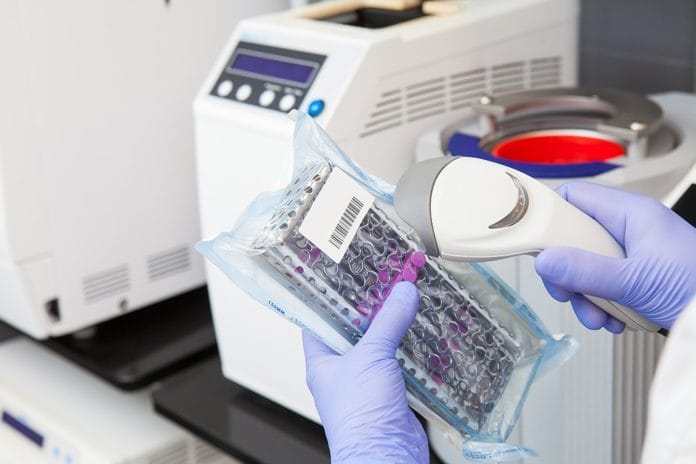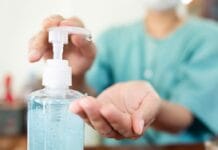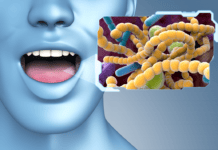As busy hygienists, we quickly become accustomed to the daily tasks of infection control. Staying on top of the latest OSHA recommendations can be a daunting task. Let’s face it, infection control isn’t the most engaging topic ever.
To make checking for infection control measures easier, the Centers for Disease Control and Prevention has released a new app, “CDC DentalCheck Mobile App,” which can be found by clicking here. However, I recommend also downloading and printing off a version as well, placing it in a binder just to have a hard copy on hand.
According to the CDC, the checklist is meant as a guideline for dental offices to “identify all procedures performed” so the appropriate infection control measures can be taken.1 The checklist addresses infection control from the beginning, starting with office policies and practices.
Here are a few of the checklist items and recommendations from the CDC,1 as well as Midmark’s guidelines for proper sterilization using the M9 or M11 steam autoclave.2
Sterilization, Disinfection of Patient Care Items
You should be using an FDA-approved medical device for sterilization. In other words, you should be using an autoclave. You should be removing all debris from your instruments, either by placing them in an ultrasonic bath or with a brush (hand scrubbing is less recommended). I recommend using the ultrasonic as you are less likely to invite a possible stick, although, let’s face it, there are times when the instrument tip still needs to be scrubbed. In that case, you need to be using a long-handled brush to minimize contact.
Fun fact that you may not have known: When you are cleaning/disinfecting instruments in the sterilization area, you should be wearing rubber cleaning gloves! The CDC states that we should “wear puncture- and chemical-resistant/heavy duty gloves for instrument cleaning and decontamination procedures.”
Our nitrile or latex gloves are not puncture-resistant. From my own experience, the most common injuries or sticks tend to occur when we are cleaning our instruments.
Also, whenever you are handling instruments, such as moving them from the operatory to the sterilization area, you need to carry them in a puncture- and leak-proof receptacle, not clenched in your fist or out in the open on a tray. Just imagine running into a patient on your way to sterilization or running into the assistant with your tray in your hand; instruments are flying and the next thing you know, you’ve stuck yourself, the assistant, or a patient … the horror! (And the cost!) And I’m not talking financial costs here. I’m talking about the emotional, life-altering costs that can occur in this situation. You and your employer will have several decisions to make, including the decision on who you need to see−your health-care provider or a provider that your employer has an agreement with−to decide if you need to begin prophylactic treatment, which can have lasting side effects.
Autoclaving Instruments
You should check your autoclave manufacturer for specific instructions if your office does not use a Midmark. The guidelines below are created from Midmark’s instruction manual for the M9/M11 steam autoclave.2 Here are a few do’s and don’ts:
- Don’t overfill your autoclave. Your packs should be placed on the rack in a single layer. They should not touch each other or the wall of the autoclave. If you overfill, the steam cannot adequately circulate, and your packs may not be fully sterilized.
- Don’t mix wrapped and unwrapped instruments. You can mix packs and wrapped instruments as long as you ensure that there is adequate space between them.
- Don’t use packs that are wet, as they can become easily contaminated, and may no longer be sterile.
- Do make sure instruments are thoroughly dry before bagging and placing in the autoclave.
- Do make sure to place your packs with the plastic facing up, as this helps them dry better.
- Do place wrapped instrument cassettes on the tray and not directly onto the inside surface of the autoclave.
- Do place a biological monitor inside wrapped instrument cassettes.
- Do follow the manufacturer’s instructions on weekly and monthly maintenance. This usually means emptying the water reservoir weekly, and refilling with fresh distilled water, and running a cleaning solution once a month.
- Do make sure your office runs a spore test weekly and that you have a documentation program in place.
Disinfecting Room Surfaces3
Spray, wipe, spray or wipe, discard, wipe! The latter is preferred since it keeps aerosols out of your lungs.
Unless you are using a disinfectant that comes presoaked and ready to use, you need to spray, then wipe to remove debris/blood/etc., and then spray again, letting the spray dry for the specified amount of time given by the manufacturer, before turning your room around.
If you are using a presoaked disinfectant, you still need to wipe once to remove debris/etc., and then wipe again, thoroughly wetting all surfaces. Studies have shown that organic and inorganic matter affect the efficacy of a disinfectant, so we need to remove it first, then reapply the disinfecting agent to make sure the surface is thoroughly disinfected.
You should barrier all difficult to clean surfaces that you could potentially touch during the appointment.
For example, I have a button at the end of my tray handle that releases the arm the tray is on, allowing me to adjust the tray and arm height. It’s a small button. When pressed, my thumb touches the button and the handle. If I had blood on my gloves, the blood could potentially be on the inside lip of where the button is depressed. Since this is a hard-to-clean area, I barrier it.
Of course, I still wipe it when I’m disinfecting the room, but I say that you can’t be too careful.
We educate our patients on prevention and stress how important it is to take a few minutes each day to develop good oral hygiene habits, to prevent decay and periodontal disease. Taking a few minutes each day in our work schedule to develop good infection control practices is equally important in the prevention of possible transmissible diseases and infections, and in creating a healthier work environment for ourselves and our patients.
Before you leave, check out the Today’s RDH self-study CE courses. All courses are peer-reviewed and non-sponsored to focus solely on pure education. Click here now.
Listen to the Today’s RDH Dental Hygiene Podcast Below:
References
- Infection Prevention Checklist for Dental Settings. Centers for Disease Control and Prevention. (2016) Retrieved from https://www.cdc.gov/oralhealth/infectioncontrol/pdf/safe-care-checklist-a.pdf
- Product Manual for M9/M11 Self Contained Steam Sterilizer. Midmark. (2016) Retrieved from https://www.midmark.com/docs/librariesprovider2/pdfs/003-2707-99.pdf?sfvrsn=adbc4204_14
- Factors Affecting the Efficacy of Disinfection and Sterilization. Centers for Disease Control and Prevention. (2008) Updated: September 18, 2016. Retrieved from https://www.cdc.gov/infectioncontrol/guidelines/disinfection/efficacy.html












